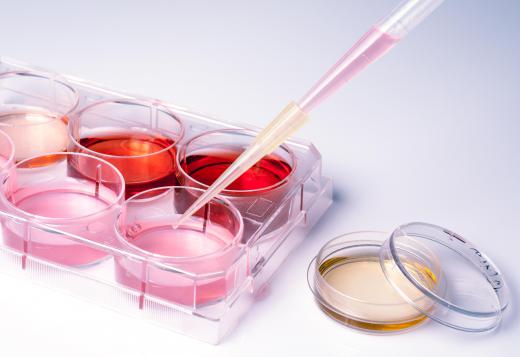What is Heterogeneity?
 Mary McMahon
Mary McMahon
The word “ heterogeneity” is used to describe a mixture of different items, in contrast with “homogeneity,” which suggests that something has a uniform composition. There are a number of settings in which these terms can be used, in everything from statistical analysis of data to discussions about regional ecology.
In some cases, heterogeneity is a desirable trait. For example, when evaluating a natural environment, a diverse mix of species, objects, and types of organisms is a good thing, because it suggests that the environment is healthy, capable of supporting many types of organisms. Likewise, in evaluations of the genetics of a population, heterogeneity of genetic material suggests robustness and diversity, while homogeneity in a population can be a sign that the population is vulnerable to problems.

In genetics, heterogeneity suggests that genetic material is being exchanged at a brisk rate between diverse individuals. This indicates that negative traits are more likely to drop out of a population, while positive traits can be brought forward. By contrast, homogeneous genetic populations tend to amplify negative traits, and they are extremely vulnerable to disease. For example, if all of the plants in a field carry a gene which can cause the plant to get sick if it is exposed to a particular fungus and the fungus enters the field, all of the plants will sicken. By contrast, if 25% of the plants carry the gene, those will die, but the remainder will stay healthy.
When any substance is evaluated scientifically, one of the qualities assessed is heterogeneity, whether a technician is analyzing a blood sample or trying to determine the constituent components of an unknown compound. In addition to reflecting a mixture of components, heterogeneity can also appear in the form of a mixture of structures. Milk, for example, is naturally heterogeneous, but it is often processed so that it becomes homogenized, ensuring that the components of the milk will not separate out before people get a chance to drink it.
Heterogeneity can also be a desirable trait in a statistical sample. Scientists generally prefer to see large, diverse samples when it comes to statistics, rather than smaller, limited samples. If a sample is largely homogeneous in composition, the results can be difficult to apply to other populations or to the world in general, while a heterogeneous sample is viewed to have more statistical validity. There are a number of ways to evaluate the composition of a sample to find out whether it is varied enough to satisfy standards of validity.
AS FEATURED ON:
AS FEATURED ON:











Discussion Comments
It really is necessary in statistics to make sure that you have a relatively heterogeneous sample. Often people make the mistake of limiting their sample somehow (and of course, sometimes the very nature of the study means that there will be some unavoidable homogeneity).
For example, if you are doing a phone survey, you'll have to bear in mind that your sample is only going to contain the people who are willing to talk to the researchers, or who are home at a certain time, or who have listed numbers, and so forth.
What you want is as close to perfect heterogeneity as possible within the group you're trying to survey. Usually that means making everyone in the group do the survey!
I know one of the most famous cases of homogeneity is in cheetah genetics. All of those big cats are so closely related, they might as well be twins, which is extremely dangerous for the species.
If just one bug manages to start killing them, it could sweep through the whole population in the world and they could be extinct in a matter of months.
I've heard that there are all sorts of theories on how to introduce more heterogeneity to the genetic pool, but I'm not sure scientists really know how to do it yet. The strangest idea I can remember was that someone thought they should have their reproductive cells exposed to radiation in the hope that it will create mutations.
That seems like a really long shot to me.
Post your comments